Good afternoon, and welcome to NEXT SERVICES 164km, a project space for the esoteric and inscrutable; my name is James Hope Howard, and I had announced three months ago that I would officially launch the site with this very post on April 20th, 2020, at 4:20:69 PM. Which is right now! So please bear with me if the animated .GIFs below haven’t quite loaded yet, as I am doing my best to upload them as we speak, and also I live in the forest. (Quite literally, but we’ll get to that another time.)
I’m very pleased at this time to also welcome you to the start of the site’s first major, large, inexorably weird project: the debut of Fire Prime Ministerial Wrestling / Lutte Chauffée des Premiers Ministers, FPMW-LCPM, a full collection of Canadian Prime Ministers recreated and reimagined as wrestlers in the video game Fire Pro Wrestling World, available now on personal computer and on PlayStation 4.


There are twenty-three Prime Ministers in the history of Canada, each of whom will compete in our upcoming inaugural tournament, all of them in hot pursuit of the FPMW-LCPM Canadian Championship title—but, ah, we’ll get to all of that later.
First things first, let’s lay out some starting concepts, and then meet our first crop of combatants. There are a couple of quick explanatory notes I’ll touch on before we launch into our first group of eight, so as to help partly explain how I’ve put everything here together.
Below each Prime Minister, you’ll see reference to a Hillman-Granatstein ranking system; historians Norman Hillmer and J. L. Granatstein wrote a 1997 Maclean’s study and subsequent landmark 1999 book, Prime Ministers: Ranking Canada’s Leaders, that compiled the analysis of twenty-five historians across Canada to definitively rank each of the then-twenty Prime Ministers from first to worst.
The reason I based my work off of this particular ranking is twofold: firstly, subsequent attempts at recreating the study have broken the Prime Ministers down into two categories, long-term and short-term, which is of no help when you’re working on them as one big list; and, secondly, twenty is a lot easier a number to split points between. So I’ve left the most recent three Prime Ministers—Paul Martin, Stephen Harper and Justin Trudeau—at neutral starting totals (140 skill points), to reflect the relative dearth of historical analysis on them thus far, and then added or subtracted skill points to the first twenty Prime Ministers based on their Hillmer-Granatstein rankings, at two points per interval (+20 for being #1, +18 for being #2, and so on down to a -20 for being #20).
This seemed like the fairest approach to the matter for now, and if later down the road I have to come back and drop Paul Martin by ten or twenty points, well, that’s just the way it goes.
This naturally also leads us into a quick explanation of Fire Pro Wrestling World’s skill points, or Edit Points, which partly dictate how effective your created wrestler will be on offence and defence, control how quickly or slowly they move and climb, establish the durability of their different body parts, and also power any special skills the wrestler may have (submission resistance, enhanced recovery, et cetera). They aren’t the be-all-end-all deciding factor by any means, because the Fire Pro engine is intensely complicated in ways that I will do my best to explain a week from now, but suffice it to say it’s better to have them than to not have them.
You’ll also see a line below each Prime Minister for their Fire Pro name; the Fire Pro Wrestling series has a long and hilarious tradition of renaming its wrestlers just enough to skirt the legal liability of having several hundred easily recognizable wrestlers in its playable roster, a running gag of barely plausible deniability dating all the way back to the series’ 1989 debut on the PC Engine.
“Oh, no no, this isn’t the world-famous mustachioed American cowboy brawler Stan Hansen; this is the mustachioed American cowboy brawler STAR BISON. And the flame-tattooed wrestler across the ring from him definitely isn’t Bam Bam Bigelow, that’s GANGAN GIGAS.”
The more committed you get to the bit, the funnier it gets, so I fully encourage you to read the Critical Club comprehensive list of Fire Pro names—particularly if you enjoy that very distinctive Bobson Dugnutt approach to naming video game characters—because it’s been a lowkey delightful source of entertainment for legitimately three solid decades now. Sometimes people would get the newest Fire Pro and set out to rename all the characters to their real names, but an equal or greater amount of people would just let the Fire Pro names rock, and both approaches are perfectly valid, so I’ve made sure to make sure that you’ll have both options below.
(You will get to play as all of these Prime Ministers, by the way. I’ll be uploading all of the wrestlers, plus the FPMW-LCPM rings and referees, to the Steam Workshop and PS4 sharing service upon the conclusion of the inaugural tournament, so more on that as it develops.)
As I’d mentioned above, I’d decided on this launch time and date three months ago; you may recall the world being a little different then, pre-pandemic and whatnot. Both Canadian politics and professional wrestling—our twin subjects of this project, and two subjects intertwined in some very interesting ways—are currently looking very different than they normally do, but both continue on nonetheless, both being considered essential services. Granted, the essential-services status for professional wrestling is only currently active in Florida, and only because a very significant bribe appears to have been involved.
(Wrestling in Japan is taking the opposite approach, aiming to return only when Japanese culture has completely recovered from the COVID-19 pandemic. Wrestling in Mexico is also taking a different, yet entirely culturally consistent approach; luchadors are currently gearing up to settle their differences by playing King of Fighters 2002.)
So, speaking of bribery, it’s time to introduce our first Prime Minister of Canada, and thereby our first competitor:

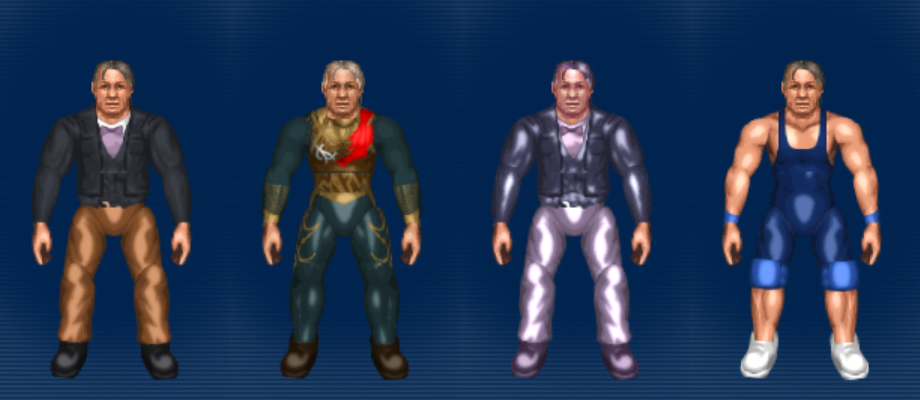
REAL NAME: Sir John A. Macdonald
FIRE PRO NAME: Jack E. Macdaniel
COSTUME SLOTS:
(1) 1891 campaign poster
(2) House of Commons portrait
(3) Canadian $10 bill
(4) Team Blue
INCUMBENCY: 18 years, 11 months
HILLMER-GRANATSTEIN RANKING: #2
H-G +/-: +18
TOTAL POINTS: 158
FINISHER: The Last Spike
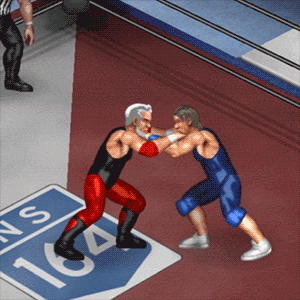
NOTES:
I wouldn’t trust him if I were you.

Well, I warned you.
John A. Macdonald remains a complicated hot-button topic of discussion among historians and laypeople alike, even now, a hundred and fifty years and change later; a Father of Confederation, a gifted orator, an instigator of ethnic cleansing, an indefatigable negotiator, a functional alcoholic until he wasn’t, an early sex symbol (?!), and a chief architect in building what we now understand as Canada. The Canada he built, of course, also established the Indian Act and the residential school system, and an even cursory primer on the effects of either of those will have you fully ready to haul him off and throw paint at him.
By most accounts John A. was a racist even by the racist standards of the time, and a binge drinker even by the binge-drinking standards of the time; he is suspected to have been completely trashed when he sent the infamous Pacific Scandal telegram, demanding that railroad promoter Hugh Allan bribe him ten thousand dollars on top of what he’d already bribed him. You are probably starting to get the sense that he was a complicated figure in life, which made him a doubly complicated figure in death, and Canada as a nation has essentially been reckoning with him ever since.
(I assure you the other writeups are not all going to involve this many weblinks. That’s the thing about writing about the Prime Ministers of Canada, you’re honour-bound to lead off with a doozy right out the gate.)
The Last Spike was the commemorative final railroad spike driven into the freshly-completed Canadian Pacific Railway, another of Macdonald’s very aggressive nationbuilding pursuits, and one that captured the imagination of Canadians immediately. ‘Immediately’ was also how quickly he betrayed the people who had actually built it, implementing a head tax so overtly racist that Canada had to apologize for it later—and that wasn’t even close to being the only federal formal apology that Macdonald’s actions would later require. (Again: complicated figure!)
DID YOU KNOW?: John A. Macdonald was the first and only Prime Minister to drunkenly vomit on the floor, during a campaign debate event, partway through his own speech. He’s a very complicated figure!


REAL NAME: Alexander Mackenzie
FIRE PRO NAME: Zandy Mcdermot
COSTUME SLOTS:
(1) House of Commons portrait
(2) Mackenzie the Mason
(3) Canadian 4¢ stamp
(4) Team Red
INCUMBENCY: 4 years, 11 months
HILLMER-GRANATSTEIN RANKING: #11
H-G +/-: -2
TOTAL POINTS: 138
FINISHER: Mortar Shell

NOTES:
Humour me my pre-Crisis-Ron-MacLean train of thought on how this finishing move got its name: prior to becoming Prime Minister, Alexander Mackenzie was known far and wide for his skilled masonry, working as he did with stones and mortar, and a mortar, of course, with its launch speed and delivery force, is a power bomb. Back for more, on Hockey Night in Canada, after this.
Ha ha! Ahh, I’m kidding, of course. We don’t have hockey any more.
Alexander Mackenzie became the second Prime Minister of Canada largely by circumstance; he allowed his name to stand for Liberal leadership when nobody else wanted it and the Macdonald government seemed invulnerable, then was swept into power just months later when it turned out the Macdonald government was really into bribery.
Despite a few notable accomplishments—the introduction of secret ballots in elections, the establishment of the Supreme Court, y’know, the nice finishing touches when you’re building a nation—Mackenzie’s time in power was considered largely forgettable, which will happen when an extended recession blankets the nation and you don’t actually have any money to work with.
That recession would also lead to his government’s one-term downfall, with Macdonald and his new National Policy landsliding the Liberals out of power in 1878. And because Macdonald’s 1878 campaign had been centrally predicated on high-tariff protectionism against the United States, this result, too, broke important new ground for this great nation of ours: Alexander Mackenzie became the first Prime Minister of Canada to lose an election for being seen as too friendly towards the United States.
DID YOU KNOW?: Until the Nickle Resolution of 1917 effectively ended the practice, every Prime Minister of Canada was knighted by Britain (hence the ‘Sir’ prefix)—except for Alexander Mackenzie, who turned it down three times, considering it antithetical to his working-class roots. Alexander Mackenzie also served as his own Minister of Public Works while Prime Minister, including oversight of the completion of the Parliament Buildings, and he secretly added an extra outside stairwell onto the West Block so that he could leave without having to talk to anybody. And you know what? I respect it.
“Once, while touring Fort Henry as prime minister, he asked the soldier accompanying him if he knew the thickness of the wall beside them. The embarrassed escort confessed that he didn’t and Mackenzie replied, ‘I do. It is five feet, ten inches. I know, because I built it myself!‘”


REAL NAME: Sir John Abbott
FIRE PRO NAME: Costello Argenteuil
COSTUME SLOTS:
(1) 1892 Topley photograph
(2) House of Commons portrait
(3) Canadian 3¢ stamp
(4) Team Blue
INCUMBENCY: 1 year, 5 months
HILLMER-GRANATSTEIN RANKING: #17
H-G +/-: -14
TOTAL POINTS: 126
FINISHER: Argenteuil Backbreaker
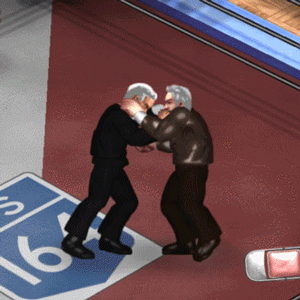
NOTES:
damn bro which Instagram filter is this

Sir John Abbott was born in, and represented, what was then the riding of Argenteuil (now Saint-André-d’Argenteuil). Luchadors and other King of Fighters players will recognize the maneuver above as the Argentine Backbreaker, though it’s better known as the Torture Rack to most other audiences. So the Argenteuil Backbreaker, pictured above, is as natural a combination as the Prime Minister and the Senate House Leader—the two positions that Sir John Abbott held simultaneously, making him the first Prime Minister of Canada to do so.
He hadn’t intended to combine the two positions, and in fact hadn’t wanted to be Prime Minister at all—a surprisingly common sentiment among the earliest Prime Ministers, one notes—but he seemed to find an acceptable compromise: he would do it, but by gum, he wouldn’t have to like it.
There’s a lot to enjoy in this next excerpt, so please take your time to savour it:
“John Sparrow David Thompson, Charles Tupper and Mackenzie Bowell were regarded as possibilities, but it was [John] Abbott who emerged as the compromise choice. Abbott never wanted the position and wrote that he was the least loathsome of all the available options. Ironically, only 12 days before he became prime minister, he wrote, ‘I hate politics, and what are considered their appropriate methods. I hate notoriety, public meetings, public speeches, caucuses and everything that I know of that is apparently the necessary incident of politics, except doing public work to the best of my ability.’ Despite these sentiments, Abbott became the first Canadian-born prime minister, taking over the role on 15 June 1891.“
The year is 1891, and the trailblazing Sir John Abbott has introduced “thanks, I hate it” to the national political discourse. But someone had to be Prime Minister, and John A. Macdonald was now thoroughly unavailable, having died in office three months after winning the 1891 election. (Another first!)
Abbott, who was seventy years old when appointed Prime Minister, would himself step down for health reasons in December of 1892 and subsequently pass away in October of 1893. Not to spoil it—spoiler alert!! Spoiler alert for 120-year-old political results you read in high school—but everybody named in that above excerpt, and the man Macdonald defeated in the 1891 election, would all become Prime Minister within the next half a decade.
Canada had one Prime Minister in the 1860s, two through the 1870s, one through the 1880s (who was the same guy from the 1860s again), and then six different Prime Ministers in a six-year span. So, since we’d better get moving a lot more quickly to catch up, let’s meet our next combatant:
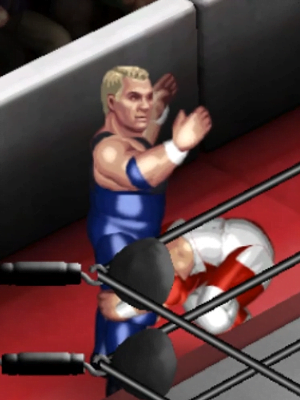

REAL NAME: Sir John Sparrow David Thompson
FIRE PRO NAME: Vaughan Falcon Davos Hampton
COSTUME SLOTS:
(1) de Bocke portrait
(2) House of Commons portrait
(3) Canadian 5¢ stamp
(4) Team Blue
INCUMBENCY: 2 years
HILLMER-GRANATSTEIN RANKING: #10
H-G +/-: +2
TOTAL POINTS: 142
FINISHER: Sparrow Arrow
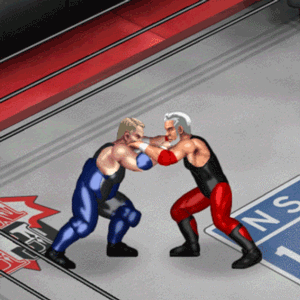
NOTES:
Canada’s mythical (and demonstrably false, but one thing at a time) reputation as a thriving utopia of shared diversity and harmony is a relatively recent invention, Canada as a nation being a relatively recent invention itself. Sir John Thompson was the fourth Prime Minister of Canada and very well could have been the third Prime Minister of Canada, except for the prevailing wisdom at the time that Canadians would never accept, and never deign to be ruled by—of all possible things—a Catholic. I mean, my goodness. Can you imagine? What’ll they want next, their own schools?
(That question would come up a lot, as it would turn out.)
DID YOU KNOW?: Sir John Sparrow David Thompson is the only Prime Minister of Canada to have died abroad while Prime Minister, and also the only Prime Minister to have died abroad in the presence of the Queen of England. Accounts of his death at his dinner with Queen Victoria differ, with some insisting that he fell backwards from the table and some insisting that he fell forwards into his soup, which would, of course, make him the only Prime Minister of Canada to have died face-down in his soup in front of the Queen of England. A day of firsts either way, to be sure.
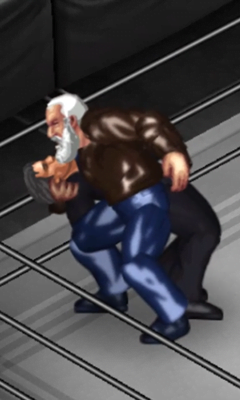
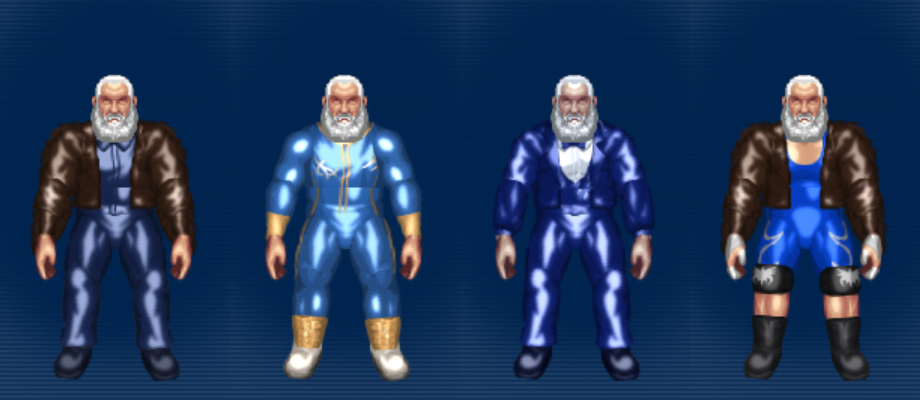
REAL NAME: Sir Mackenzie Bowell
FIRE PRO NAME: The Frenzy Scowl
COSTUME SLOTS:
(1) House of Commons portrait
(2) Christan Nicholson portrait
(3) Canadian 5¢ stamp
(4) Team Blue
INCUMBENCY: 1 year, 4 months
HILLMER-GRANATSTEIN RANKING: 19
H-G +/-: -18
TOTAL POINTS: 122
FINISHER: Nest of Traitors

NOTES:
The final episode in the five-season run of sketch comedy series The Kids in the Hall featured a segment called “Censored Sketches“, in which Kevin McDonald and Dave Foley presented a series of short sketches that had ostensibly been held off of television by network censorship rules. The final sketch is introduced by the following dialogue:
“This next sketch never even got a chance to be censored by the networks.”
“No. No, this scene was, ah, censored by the other Kids in the Hall.”
Well, that’s Mackenzie Bowell’s run as Prime Minister, pretty much. It wasn’t even that the voters rejected him, because they never got a chance to; his own cabinet forced him out of office after just sixteen months on the job, demanding that Charles Tupper replace him as Prime Minister (and we’ll get to why that’s very funny in just a minute). Mackenzie Bowell was the “Soup Du Jour” sketch of Canadian political history, and lasted about as long as the sketch did, in the grand scheme of things.
Much like the now-departed Sir John Abbott, Bowell hadn’t even particularly wanted the job to begin with; Governor-General Lord Aberdeen had been tasked with selecting a replacement for the abruptly-also-now-dead Sir John Thompson, and went with the most senior member, incorrectly assuming that he had hopefully learned enough about governance over the course of his career to conduct any.
Bowell’s most famous and enduring quote, in which he just straight-up called his own rebellious cabinet “a nest of traitors“, is also the title inspiration for his finishing maneuver pictured above. Mackenzie Bowell is, to my mind, the Bray Wyatt of the Canadian Prime Ministers: he’s got a great beard, he gets increasingly rambly as he’s talking but it all still sounds cool as hell, he finally gets himself positioned for his career-defining breakthrough, he gets suddenly but inevitably betrayed by his own confidants and then he loses all of his momentum in the most staggeringly deflating way possible.
So, in the spirit of following the buzzards, ho boy look at who we’re getting next:
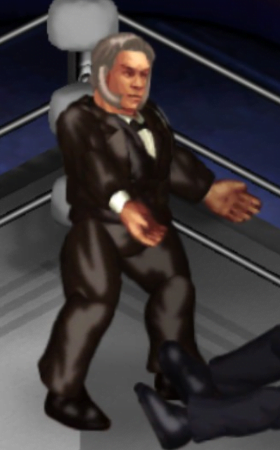
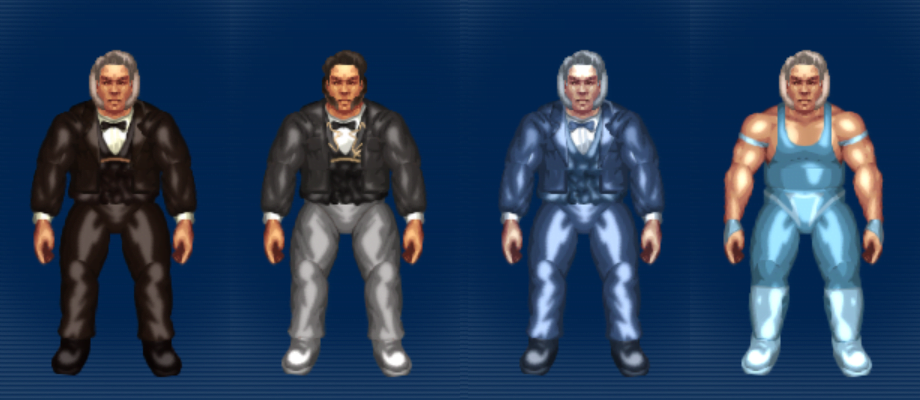
REAL NAME: Sir Charles Tupper
FIREPRO NAME: Harlan Stumper
COSTUME SLOTS:
(1) House of Commons portrait
(2) younger Tupper (1870 Topley photograph)
(3) Canadian 5¢ stamp
(4) Team Blue
INCUMBENCY: 69 days
HILLMER-GRANATSTEIN RANKING: #16
H-G +/-: -12
TOTAL POINTS: 128
FINISHER: Double Mutton Chop
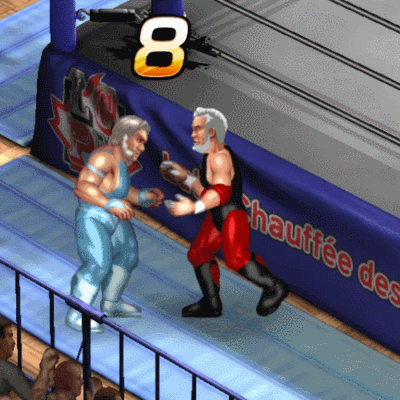
NOTES:
Hoooooh boy. Charles Tupper.
Charles Tupper’s list of accomplishments is long, and distinguished, and key to the early development of the Canadian nation. He was a Father of Confederation; the fifth Premier of the colony of Nova Scotia, which he helped bring into Canada, and also one of its most famously skilled doctors; a longtime driving force in the establishment of the railway network; a seemingly endless and countless parade of high-profile appointments, Ministerial positions and ambassadorial deployments before reaching the highest position in all the land.
And pretty much everybody… hated him. I would italicize that twice if I could, and it still wouldn’t quite be enough emphasis. They haaated this dude, and if anyone unfamiliar with him wanted to know why he was almost universally detested, all they needed to do to find out was talk to him. Rather than belabour the point too badly, I’m delighted to instead show you this summary paragraph, excerpted via screenshot from the Dictionary of Canadian Biography:
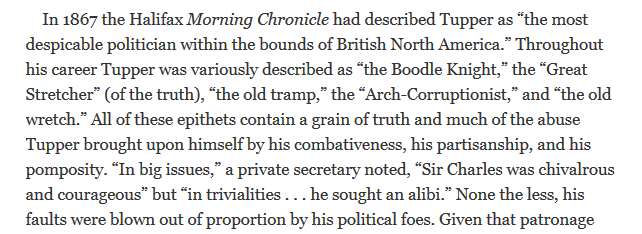
There’s a go-to gag I would normally lead off with in this situation—”Can we put you down as ‘Undecided’?”—but every time I get as far as “the Boodle Knight” I start laughing too hard to maintain my train of thought. The BOODLE KNIGHT. How badly do things have to go for you reputationally that people start referring to you as “The Boodle Knight” in public situations? I stayed on my best behaviour for the costuming stretch of the creation process, but if I start creating alternate EX modes for these guys, I 100% guarantee you this dude is getting a Boodle Knight gimmick.
But, back to the real Charles Tupper, for now. I want to again note that the leadership of the Conservative Party had literally just finished figuratively knifing Mackenzie Bowell, the whole time overtly and actively pressuring Governor General Lord Aberdeen to install Charles Tupper as the new Prime Minister of Canada. The people demand Charles Tupper, they argued! The people need Charles Tupper! The people crave Charles Tupper! This is, again, incredibly funny if you think about how actual people actually responded to Charles Tupper; imagine if 1992 Brian Mulroney had also simultaneously been 2014 George Stroumboulopoulos, and then multiply that by Galen Weston.
During his stump speeches for the upcoming 1896 election, members of his own party gathered in droves from miles around to berate and yell at him, including one speech in Toronto’s beloved Massey Music Hall that the Conservative audience famously heckled, uninterrupted and without mercy, for two solid hours.
He was not a popular man.
Let’s back up for just a second and think back on how this last term had played out, particularly from the point of view of voters, who had been giving the government thinner and thinner majorities as it got longer and longer in the tooth. There had been five different Conservative Prime Ministers just since the last election; three of them had been weirdly sour and grouchy and cantankerous, often to each other; three of these men, but not the same three as the grouchy three, had also died during this span; two of them died in office; one got thrown overboard by his own mutinous crew; all five of these Prime Ministers had been tested by the ongoing Manitoba Schools Question, and all five of them had failed, in increasingly explosive fashion.
And now the defining choice of 1896, approaching the unknown future of the twentieth century, was going to be between The Boodle Knight Charles Tupper and literally anyone else a younger, more charismatic opponent who had the temerity to suggest that the nation’s problems could instead be solved with respect and diplomacy and tact.
I wonder who they’ll pick!
Ha ha ha, just kidding, Tupper lost by thirty-one seats (!) and then refused to relinquish power (!!), continuing to try and make appointments as though it were business as usual (!!!) until Governor General Lord Aberdeen had to finally step in and force him to leave (!!!!). Not entirely the level of dignity and grace we’ve come to expect from the office, right? Now imagine this same level of behaviour from Charles Tupper, but for e v e r y t h i n g, e v e r.
And that, friends, is Charles Tupper.
I want to make special mention of one of the more entertaining twists out of all of this: with the proud Conservative name and robust Conservative election machine still running smoothly across most of (what was thus far) Canada, he actually did win the popular vote in the 1896 election. And he lost the election anyway, by too many seats to make up in any way, and behaved so spectacularly petulantly about losing in this fashion that he annoyed and alienated the same loyal supporters he’d needed just to win the popular vote in the first place.
So this, too, is the start of another proud Canadian tradition, and one that seems to only happen to the least likeable leaders. And I bet I already know who you’re thinking of now that you’ve read all that! That’s right, you guessed it: Arthur Meighen.
But we will get to him in time, too. After five Prime Ministers in one term, Canadians were looking for a little more stability and consistency, and hung onto their next leader for over fifteen years:
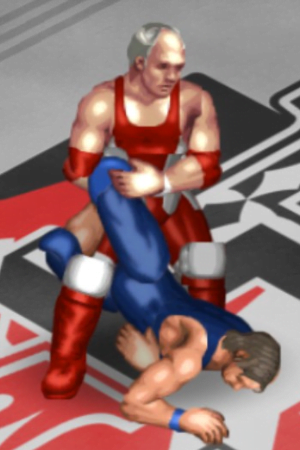
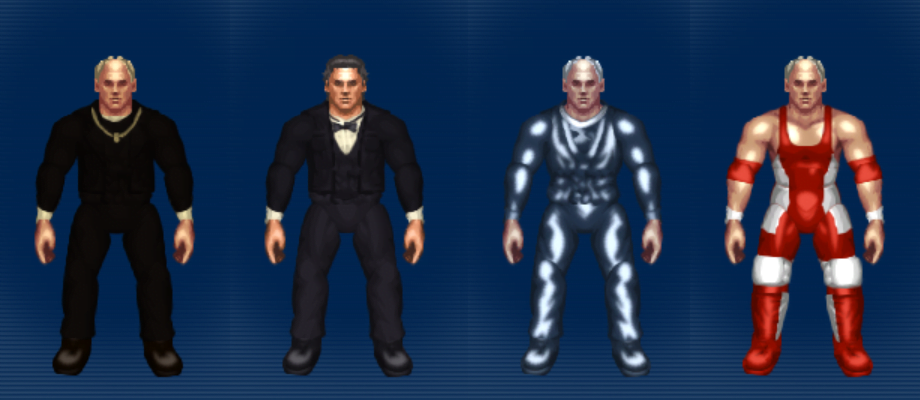
REAL NAME: Sir Wilfred Laurier
FIRE PRO NAME: Milford Sunnyway
COSTUME SLOTS:
(1) House of Commons portrait
(2) younger Laurier (1872 Topley portrait)
(3) Canadian $5 bill
(4) Team Red
INCUMBENCY: 15 years, 3 months
HILLMER-GRANATSTEIN RANKING: #3
H-G +/-: +16
TOTAL POINTS: 156
FINISHER: Sunny Ways
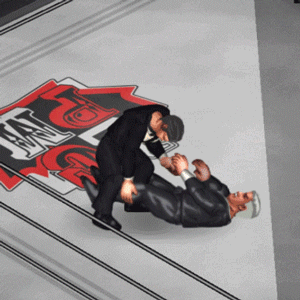
NOTES:
I didn’t Spock his third costume, but hey, if you want to, I can’t stop you.
Twenty-nine years and seven Prime Ministers in, Canada had its first French-speaking Prime Minister. His most famous speech and ensuing policy direction finally cut the Gordian knot of the Manitoba Schools Question, handling the volatility of the situation with sufficient dexterity that Pope Leo XIII publicly backed his solution. And that was just in year one for him! He ran the country for fourteen more years after that.
I am four thousand words into this Canadian-Prime-Ministers-as-wrestlers introductory post, and that’s partly because I’ve felt the need to explain the lesser-knowns and almost-unknowns that comprise a significant portion of this list to date. If you want me to go on about Wilfrid Laurier, you know that I absolutely can, but… it’s Wilfrid Laurier. He had the longest uninterrupted reign as Prime Minister in Canadian history, including four straight majority victories against two other men who also served as Prime Minister. He established a political framework and guiding philosophies that his Liberal party has adhered to, with vastly more success than failure, for genuinely over a century now. The current Prime Minister quotes him whenever he needs the extra gravitas. His picture is probably in your wallet right now. It’s Wilfrid Laurier.
There are two Liberals in the first eight Prime Ministers of Canada, one who lasted one minority government and didn’t do much, and one who lasted four majority governments and did just about everything there was to do. And yet, wouldn’t you know it, they both exited in largely the same way: an emphatic, thunderous pasting of a defeat, as penance for the cardinal Canadian sin of snuggling up a bit too economically cozy with the United States.
Which naturally leads us into our eighth entrant for the evening:
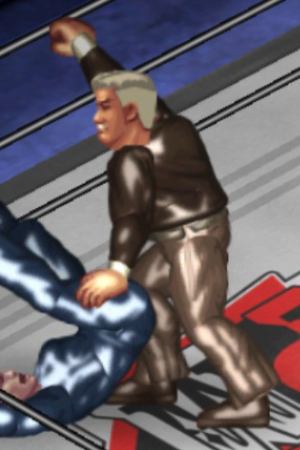
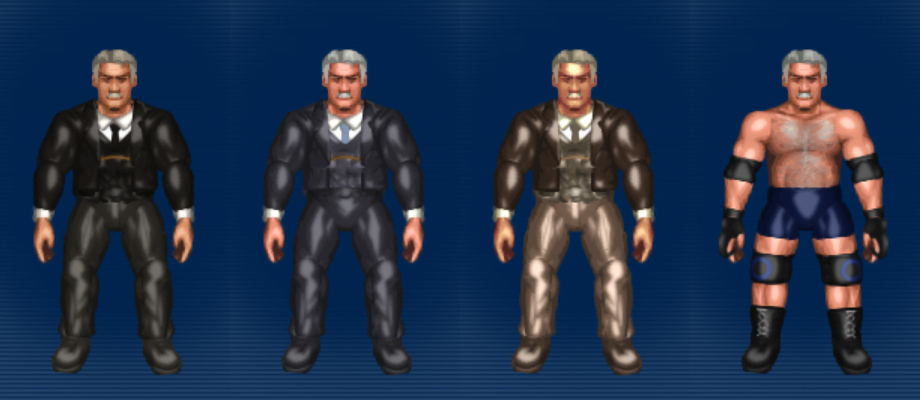
REAL NAME: Sir Robert Borden
FIRE PRO NAME: Bobert Gorgon
COSTUME SLOTS:
(1) House of Commons Portrait
(2) William Orpen portrait
(3) Canadian $100 bill
(4) Team Blue
INCUMBENCY: 8 years, 9 months
HILLMER-GRANATSTEIN RANKING: #7
H-G +/-: +8
TOTAL POINTS: 148
FINISHER: War Measures

NOTES:
Do you remember, a couple of years back now, when the internet’s big topic for a good solid couple of months was the nebulous but immediately recognizable concept of “big dick energy“? Well, here’s Robert Borden.
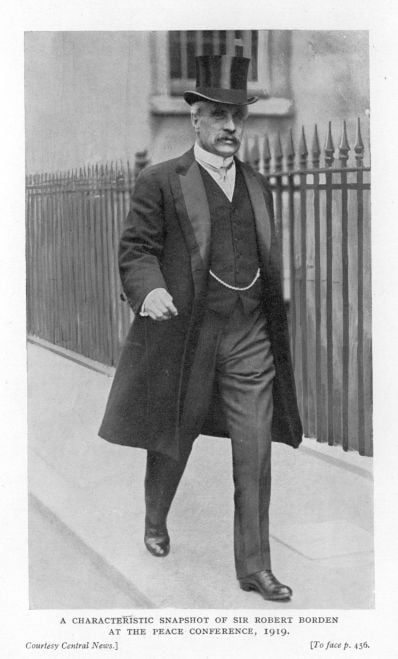
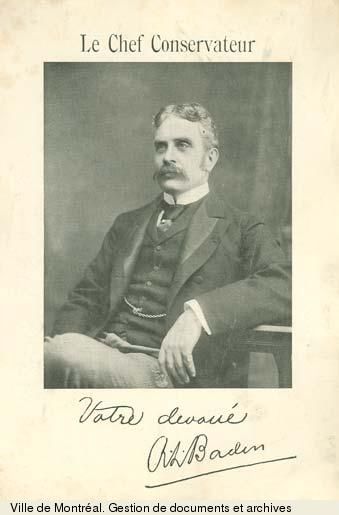
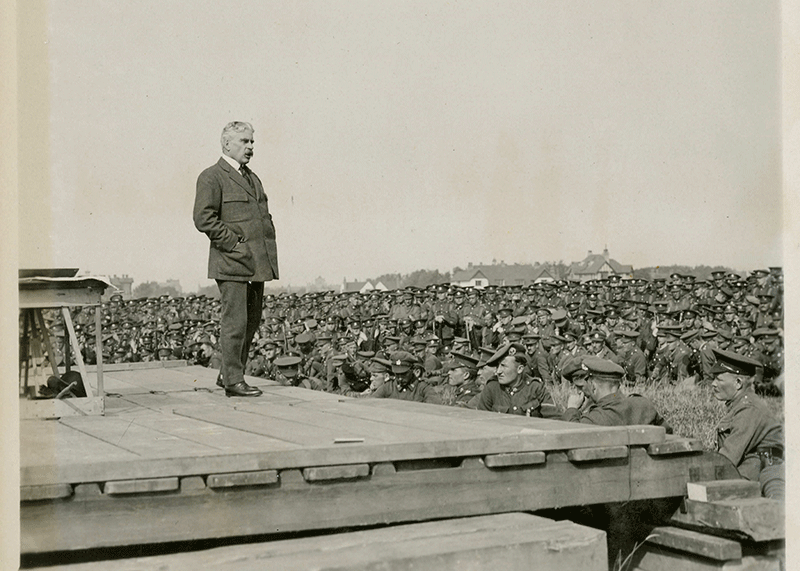
Get a load of this guy. Dude looks like all four Marx brothers at the same time and he’s out here hopping onto some wooden planks to address thousands of World War I soldiers, hands in his pockets, no amplification so he just raises his voice instead. His “characteristic” look is a top hat, and a big ol’ chain, and coat lapels the size of fenceposts. The overwhelming majority of photos taken of him look like he woke up five minutes ago. Majestic.
I cannot overstate how vehemently Borden was committed to winning the Great War, the war to end all wars, and how absolutely detached he was from pretty much anything else. (Though as prioritization goes, I gotta say, World War I was a pretty reasonable thing to be paying the lion’s share of attention to.) When the Laurier Liberals refused to join a wartime coalition government with the Conservatives to enforce conscription, Borden simply recruited a large swath of the Liberals out from under Laurier and won another commanding majority in the 1917 election. (The ensuing conscription torched the Conservatives’ fortunes in Quebec for almost seventy years, one 1958 outlier aside, but that did not slow his decision down for even a second.) He was not great on civil liberties, a theme we will be discussing multiple times in this project. He gave women the vote, some women, partly, sort of—while also taking away the vote from any groups he distrusted or believed might vote against mandatory conscription.
He was singularly focused, and Canada was indeed victorious in World War I, at considerable cost; the war is now often considered the beginning of modern Canada, as the nation entered the war as a British colony largely invisible in international affairs and ended it as a Treaty of Versailles signatory, a League of Nations member and an increasingly prominent world actor.
“Lloyd George called him ‘a sagacious and helpful counsellor’ who was ‘always the quintessence of common sense.’ Borden would have liked that.”
And I think Borden would have also liked hopping into the squared circle and running over people with knee strikes, so by golly, that’s what I set him up to do.
And that brings us to the end of our first eight Prime Ministers! Eight entrants is enough for a tournament, but it’s not enough for our tournament; there are fifteen more competitors yet, a hundred more years’ worth of Canadian Prime Ministers, and we’re going to meet all of them before our tournament action kicks off.
Please join us back here at NEXT SERVICES 164km next Monday, April 27th, for our next eight contestants, then on Monday, May 4th for our final seven. We’ll see you then, same FPMW-LCPM time, same FPMW-LCPM channel!
